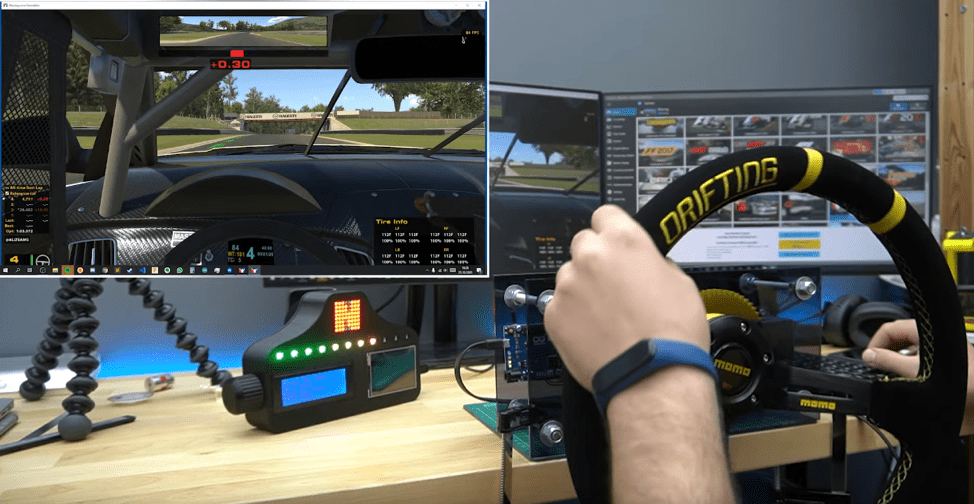This DIY steering wheel is a cheaper alternative for use in sim racing
This DIY steering wheel is a cheaper alternative for use in sim racing
Arduino Team — October 12, 2022

When participating in simulation racing video games, gamers often need to use a steering wheel controller in order to enjoy smooth and precise movements of their vehicles on screen. However, due to a shortage of certain racing rigs, finding one has become a challenge. Luckily, ilge ipek has come up with a custom solution that not only provides a much cheaper wheel alternative to store-bought ones, but even competes when it comes to some features.
Electronics selected by ipek for this project included a 10K ohm potentiometer to get the wheel's current position, an Arduino Leonardo to read the value and send it to the host PC, and an existing steering wheel that could be easily attached to the platform. In terms of software, the Leonardo runs firmware generated from the MMJoy program, which allows hobbyists to connect hardware as various HID inputs via USB. Once uploaded, the attached potentiometer has been mapped as a new joystick input that adjusts along the "X" axis.
On the hardware side, ipek placed screws in a MOMO racing wheel, which was then attached to a gear. With this setup, the wheel can move up to 900 degrees in total, which is similar to the range of motion seen in many cars. For more information about this project, you can read its description here on ipek's blog.

Arduino Team — October 12, 2022

When participating in simulation racing video games, gamers often need to use a steering wheel controller in order to enjoy smooth and precise movements of their vehicles on screen. However, due to a shortage of certain racing rigs, finding one has become a challenge. Luckily, ilge ipek has come up with a custom solution that not only provides a much cheaper wheel alternative to store-bought ones, but even competes when it comes to some features.
Electronics selected by ipek for this project included a 10K ohm potentiometer to get the wheel's current position, an Arduino Leonardo to read the value and send it to the host PC, and an existing steering wheel that could be easily attached to the platform. In terms of software, the Leonardo runs firmware generated from the MMJoy program, which allows hobbyists to connect hardware as various HID inputs via USB. Once uploaded, the attached potentiometer has been mapped as a new joystick input that adjusts along the "X" axis.
On the hardware side, ipek placed screws in a MOMO racing wheel, which was then attached to a gear. With this setup, the wheel can move up to 900 degrees in total, which is similar to the range of motion seen in many cars. For more information about this project, you can read its description here on ipek's blog.
What's Your Reaction?





















